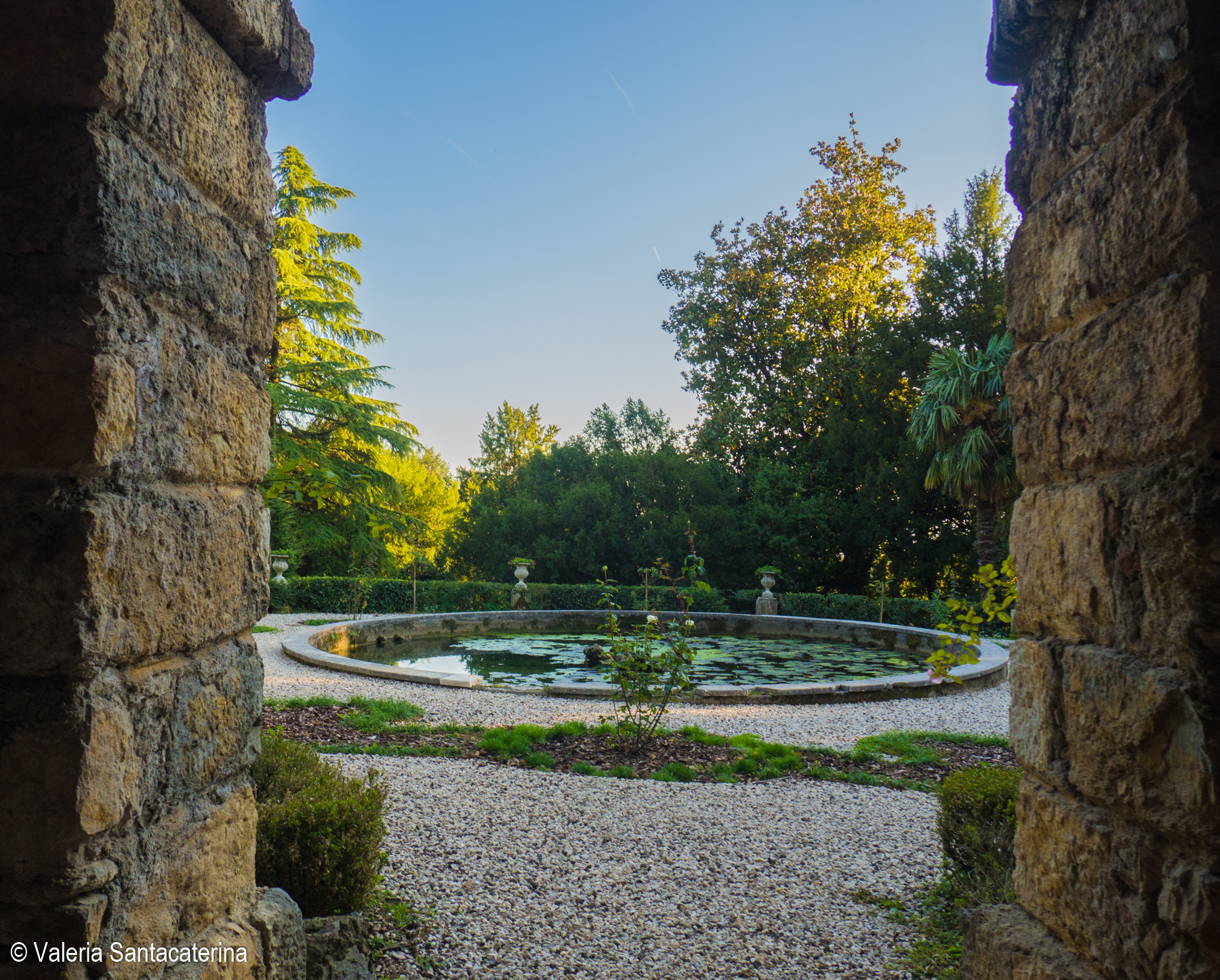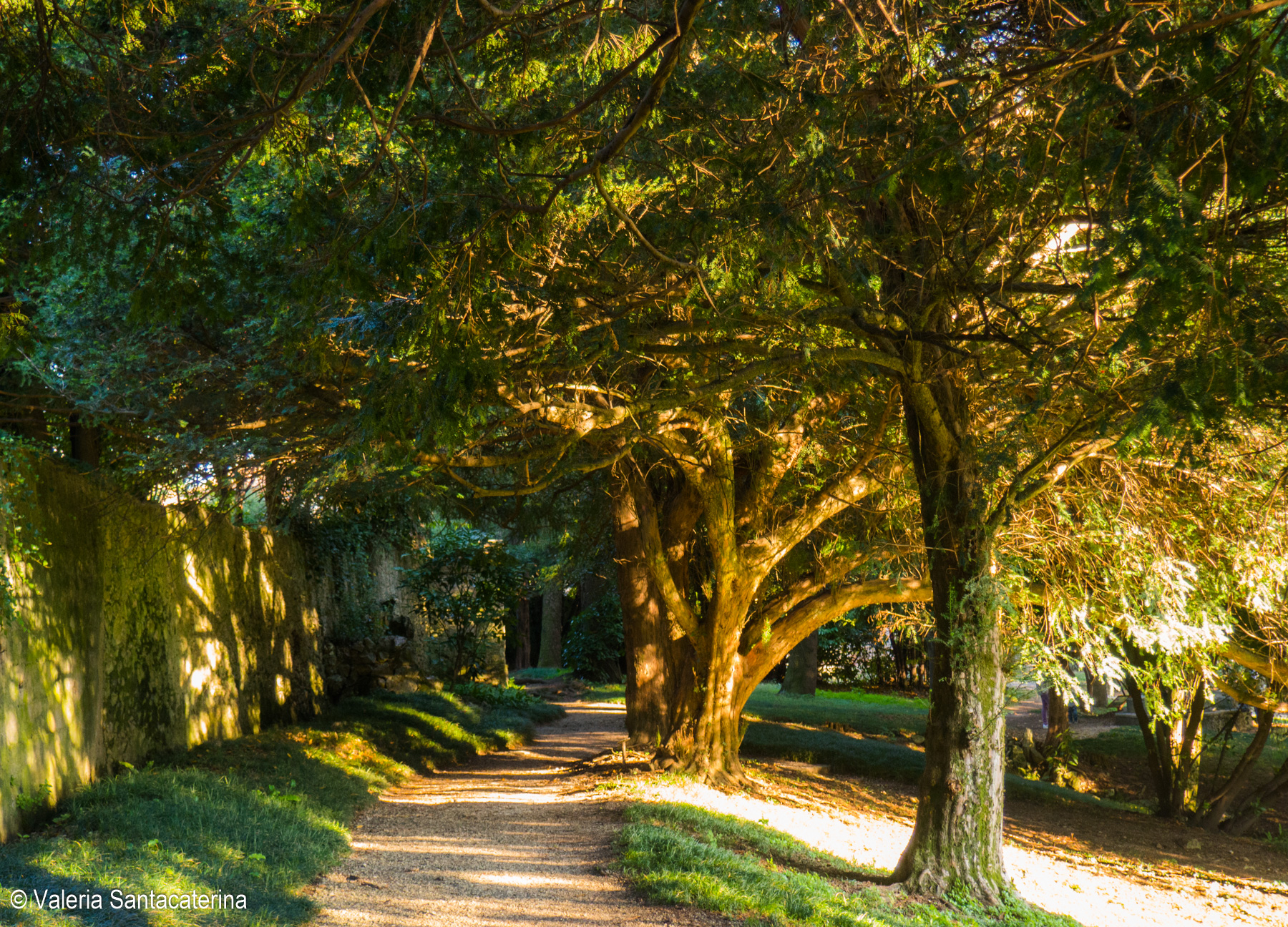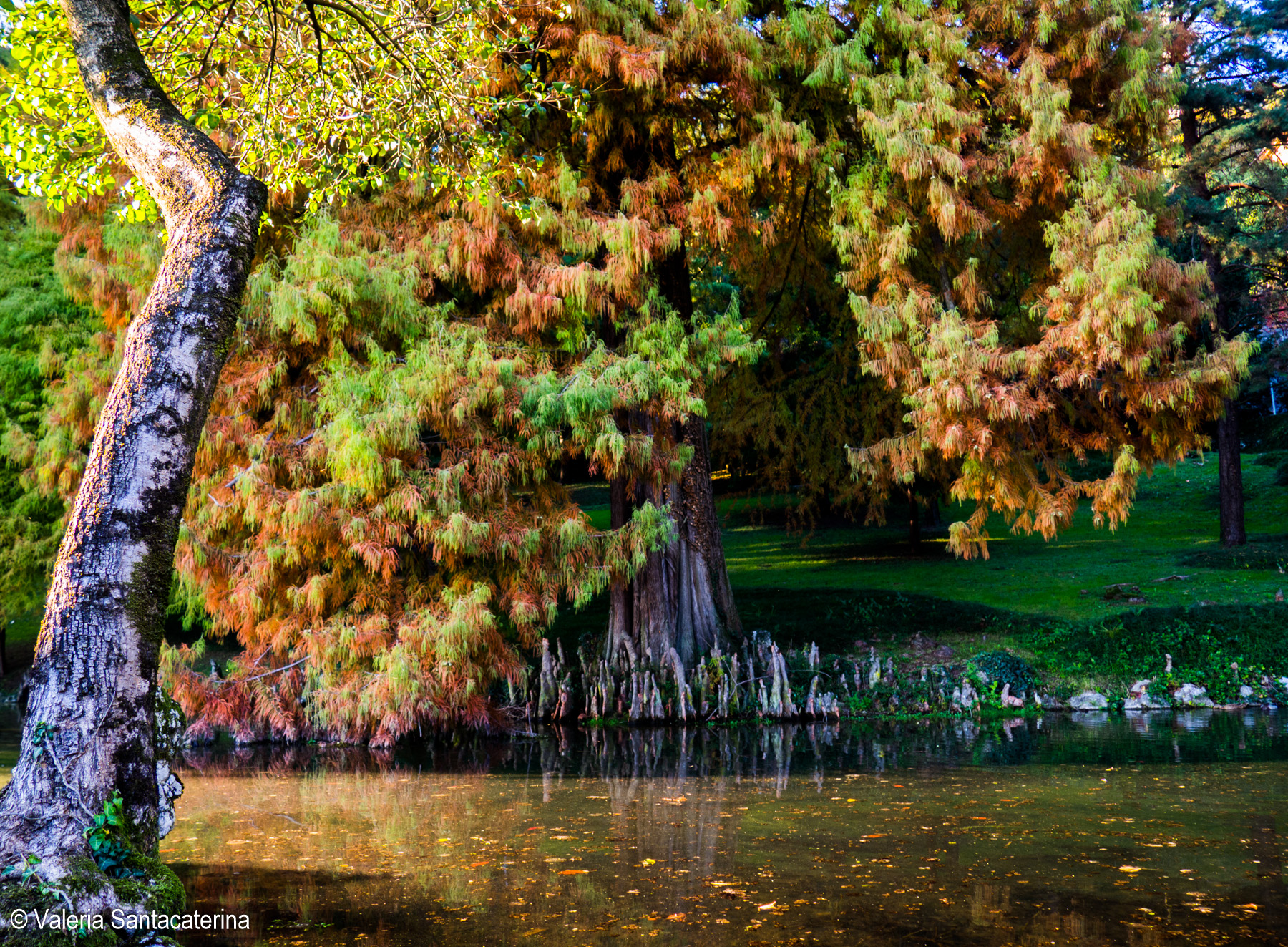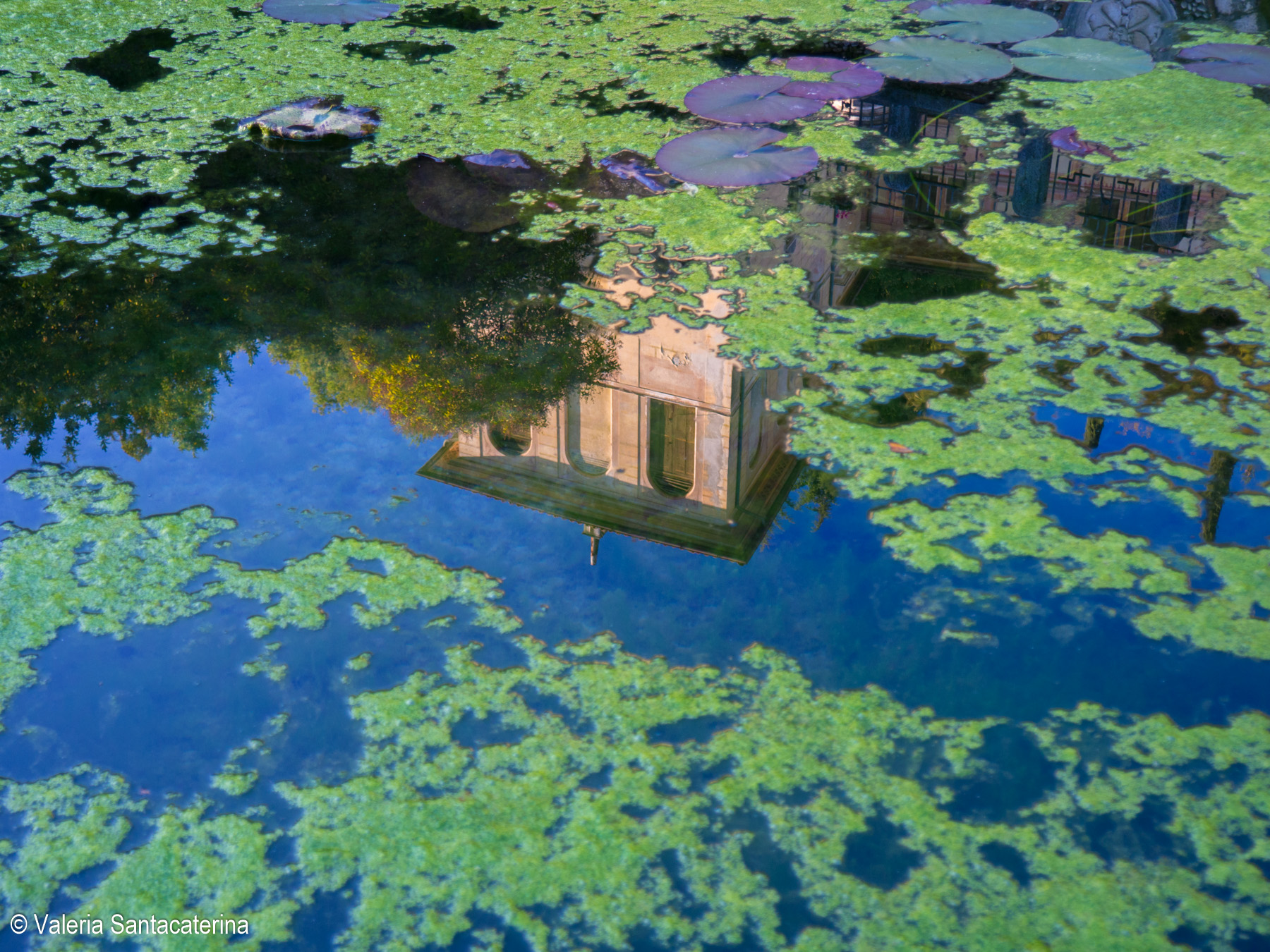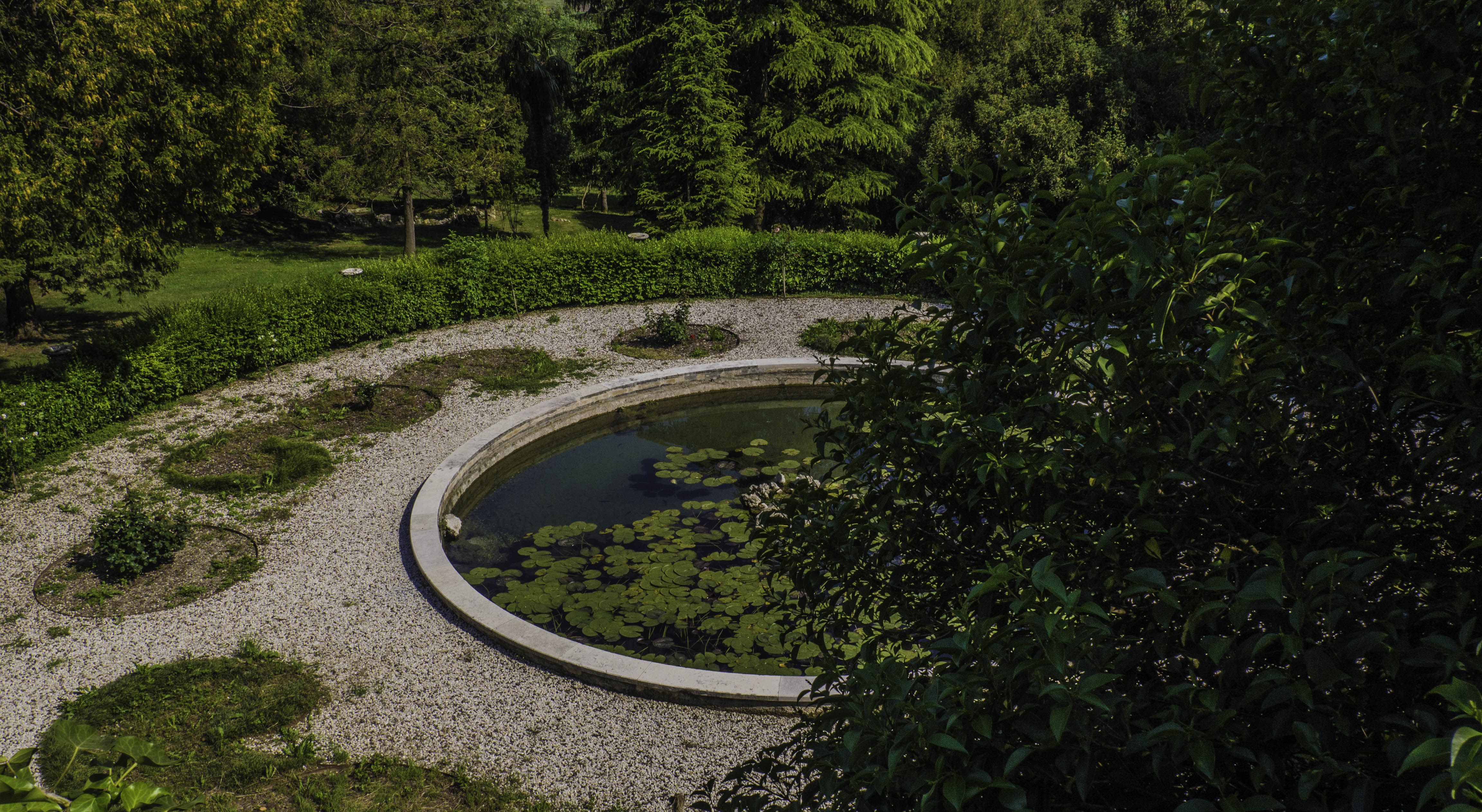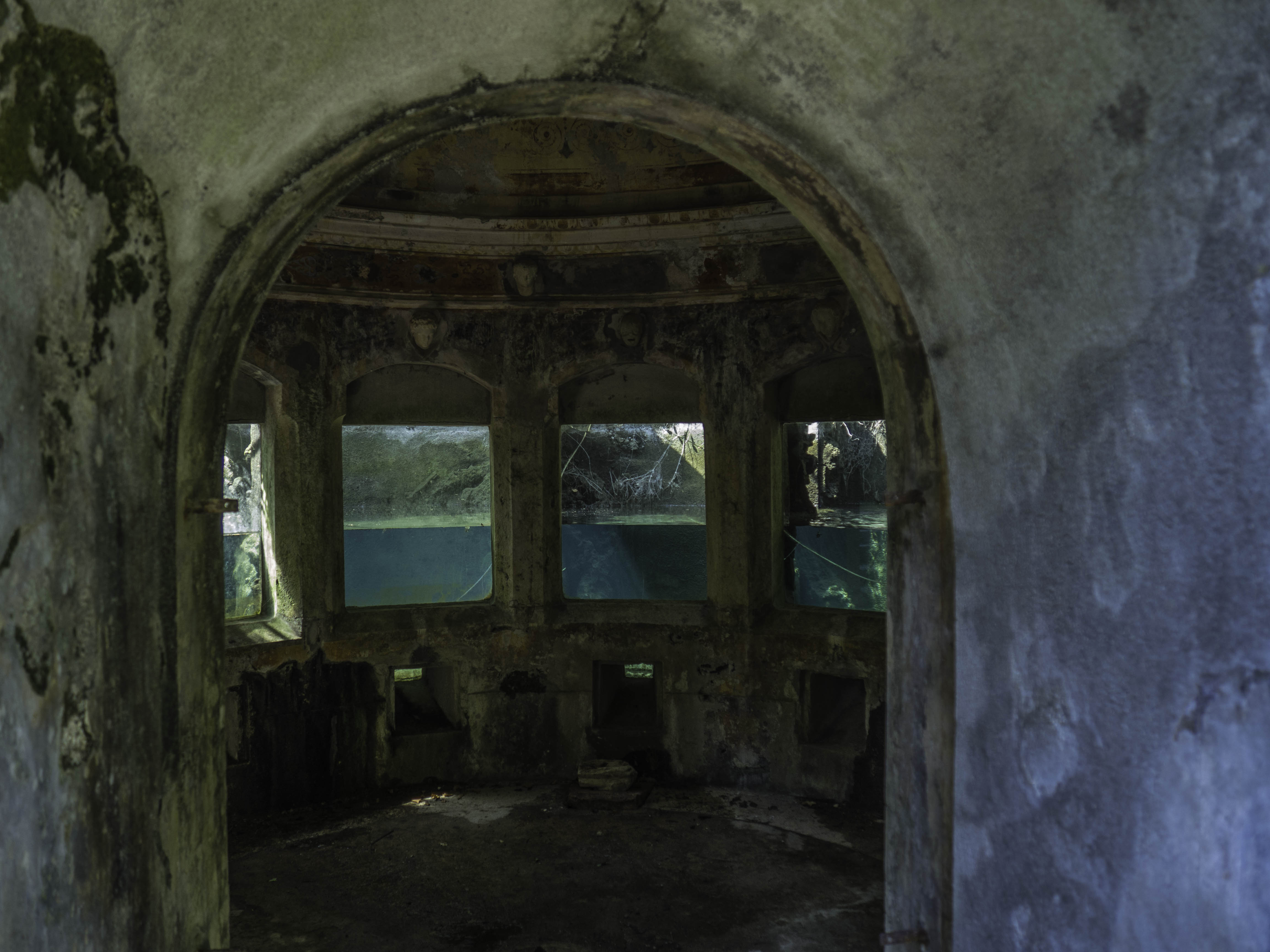Reconnecting with nature
Parco Rossi
An immersive experience between history and nature
The restoration of Parco Rossi involved the recovery of paths, historical artifacts and architectural structures, restoring the original design of the park. Accessible paths were created for the blind and people with motor difficulties, with adequate paving and tactile signs. Furthermore, interactive multimedia systems were introduced, which allow you to explore the park through informative content, making the experience more inclusive for everyone.
Italy
Local
Santorso is the main village, around Vicenza, Padova, Verona and Venice
Mainly rural
It refers to a physical transformation of the built environment (hard investment)
Yes
2024-12-31
Yes
https://gateproject.dolomitiunesco.info/progetto-gate/
No
No
As a representative of an organisation
The “Parco Rossi” project was born with the aim of enhancing and rediscovering the historic park of Santorso (VI), a place of great naturalistic and cultural importance, through an innovative approach that combines history, nature and technology. The initiative aims to make the park accessible and attractive to a heterogeneous public, including families, schools, tourists, scholars and citizens, offering an immersive and engaging experience that stimulates curiosity and awareness of the value of the local heritage.
The main objectives of the project include:
Redevelopment and promotion of the Park as a place of historical and naturalistic interest, with particular attention to the protection and enhancement of the landscape and biodiversity.
Development of interactive and multimedia routes, using digital tools such as apps, audio guides and augmented reality to offer visitors an innovative and customizable experience.
Active involvement of the community, through thematic events, educational activities and workshops aimed at schools, families and cultural associations.
Raising awareness of environmental sustainability, with educational initiatives related to biodiversity, management of natural resources and the promotion of eco-sustainable behaviors.
Thanks to this project, Parco Rossi has become a point of reference for the community and for cultural and environmental tourism in the area. The involvement of schools and local authorities has strengthened the educational function of the park. Furthermore, collaboration with experts in the sector has allowed us to better integrate innovation and tradition, ensuring an immersive experience that is accessible and inclusive for all age groups.
The results achieved testify to the success of the project in enhancing the historical and landscape heritage of Parco Rossi, transforming it into an open-air laboratory, capable of stimulating curiosity, learning and respect for the environment.
The main objectives of the project include:
Redevelopment and promotion of the Park as a place of historical and naturalistic interest, with particular attention to the protection and enhancement of the landscape and biodiversity.
Development of interactive and multimedia routes, using digital tools such as apps, audio guides and augmented reality to offer visitors an innovative and customizable experience.
Active involvement of the community, through thematic events, educational activities and workshops aimed at schools, families and cultural associations.
Raising awareness of environmental sustainability, with educational initiatives related to biodiversity, management of natural resources and the promotion of eco-sustainable behaviors.
Thanks to this project, Parco Rossi has become a point of reference for the community and for cultural and environmental tourism in the area. The involvement of schools and local authorities has strengthened the educational function of the park. Furthermore, collaboration with experts in the sector has allowed us to better integrate innovation and tradition, ensuring an immersive experience that is accessible and inclusive for all age groups.
The results achieved testify to the success of the project in enhancing the historical and landscape heritage of Parco Rossi, transforming it into an open-air laboratory, capable of stimulating curiosity, learning and respect for the environment.
History
Nature
Innovation
Community
Sustainabilit
The Parco Rossi project is based on a vision of environmental, social and economic sustainability, transforming a historic area into an innovative and accessible green space. Key objectives include ecological regeneration, energy efficiency, social inclusion and the enhancement of historical heritage.
To ensure environmental sustainability, the project implemented the redevelopment of the greenery with native species, promoting biodiversity and reducing water consumption. The use of recycled materials and low-impact construction techniques allowed to minimize the ecological footprint of the interventions. Furthermore, the installation of LED lighting systems and solar panels reduced the energy consumption of the park, promoting self-sufficiency.
From a social point of view, the park was conceived as an inclusive space, with accessible paths, interactive thematic areas and educational activities aimed at schools and families. The collaboration with local associations encouraged community involvement, strengthening the sense of belonging and promoting good sustainability practices.
The project’s approach makes it a replicable model in other urban and peri-urban contexts, demonstrating that environmental protection can go hand in hand with cultural enhancement and social well-being. Parco Rossi is therefore a concrete example of how sustainability can be integrated into the redevelopment of the territory, creating a balance between past, present and future.
To ensure environmental sustainability, the project implemented the redevelopment of the greenery with native species, promoting biodiversity and reducing water consumption. The use of recycled materials and low-impact construction techniques allowed to minimize the ecological footprint of the interventions. Furthermore, the installation of LED lighting systems and solar panels reduced the energy consumption of the park, promoting self-sufficiency.
From a social point of view, the park was conceived as an inclusive space, with accessible paths, interactive thematic areas and educational activities aimed at schools and families. The collaboration with local associations encouraged community involvement, strengthening the sense of belonging and promoting good sustainability practices.
The project’s approach makes it a replicable model in other urban and peri-urban contexts, demonstrating that environmental protection can go hand in hand with cultural enhancement and social well-being. Parco Rossi is therefore a concrete example of how sustainability can be integrated into the redevelopment of the territory, creating a balance between past, present and future.
The Parco Rossi project was conceived to offer an immersive and high-quality aesthetic experience, enhancing the historical and natural heritage in a harmonious and evocative context. The main objective was to create a space that combines beauty, functionality and culture, transforming the park into a place of inspiration and well-being for the community.
From an aesthetic point of view, the park's design is based on a balance between nature and architecture, respecting the existing landscape and integrating contemporary elements that dialogue with the history of the place. Winding paths, well-kept green areas and artistic installations blend together to create a welcoming and stimulating environment. The use of natural materials and colors in harmony with the context has strengthened the visual identity of the park, making it a point of reference for the quality of the urban landscape.
People's experience has been improved through thematic spaces that encourage contemplation, socialization and cultural discovery. Areas dedicated to reading, art and interaction with nature allow visitors to experience the park in a dynamic and engaging way. The project also included multimedia installations and educational paths that tell the story of the place, transforming the visit into an enriching cultural experience. Parco Rossi represents an example of how aesthetic quality and visitor experience can be central to the redevelopment of a green area. The combination of innovative design, enhancement of heritage and well-being of people makes it a replicable model, capable of inspiring new approaches to the design of public spaces of cultural and social value.
From an aesthetic point of view, the park's design is based on a balance between nature and architecture, respecting the existing landscape and integrating contemporary elements that dialogue with the history of the place. Winding paths, well-kept green areas and artistic installations blend together to create a welcoming and stimulating environment. The use of natural materials and colors in harmony with the context has strengthened the visual identity of the park, making it a point of reference for the quality of the urban landscape.
People's experience has been improved through thematic spaces that encourage contemplation, socialization and cultural discovery. Areas dedicated to reading, art and interaction with nature allow visitors to experience the park in a dynamic and engaging way. The project also included multimedia installations and educational paths that tell the story of the place, transforming the visit into an enriching cultural experience. Parco Rossi represents an example of how aesthetic quality and visitor experience can be central to the redevelopment of a green area. The combination of innovative design, enhancement of heritage and well-being of people makes it a replicable model, capable of inspiring new approaches to the design of public spaces of cultural and social value.
From the point of view of physical accessibility, the park was designed to be fully accessible to people with reduced mobility, the elderly and families with children. Barrier-free paths, tactile signage for the visually impaired and spaces equipped for relaxation and socialising guarantee a smooth and comfortable experience for everyone. The inclusion of ergonomic street furniture and inclusive rest areas has further improved accessibility.
Design for all has guided the creation of multifunctional spaces that respond to different needs: inclusive play areas for children with disabilities, sensory paths to stimulate different perceptions, and quiet areas for psychophysical well-being. The park also offers cultural and educational activities accessible to different groups of the public, encouraging encounters between different generations and cultures.
From the point of view of inclusive governance, the project has actively involved the local community from the initial stages. Participatory workshops, meetings with associations and co-design tools have allowed us to gather needs and ideas, making the park a shared place that is felt as if it were their own by those who experience it every day. Furthermore, collaborative management models have been developed that involve public bodies, citizens and third sector entities. Parco Rossi thus represents an exemplary model of inclusion, demonstrating how a green area can become an accessible, fair and participatory gathering place, capable of inspiring new urban design practices oriented towards the well-being of all.
Design for all has guided the creation of multifunctional spaces that respond to different needs: inclusive play areas for children with disabilities, sensory paths to stimulate different perceptions, and quiet areas for psychophysical well-being. The park also offers cultural and educational activities accessible to different groups of the public, encouraging encounters between different generations and cultures.
From the point of view of inclusive governance, the project has actively involved the local community from the initial stages. Participatory workshops, meetings with associations and co-design tools have allowed us to gather needs and ideas, making the park a shared place that is felt as if it were their own by those who experience it every day. Furthermore, collaborative management models have been developed that involve public bodies, citizens and third sector entities. Parco Rossi thus represents an exemplary model of inclusion, demonstrating how a green area can become an accessible, fair and participatory gathering place, capable of inspiring new urban design practices oriented towards the well-being of all.
Parco Rossi was conceived as a place of well-being and sociality, with a strong involvement of the local community. Citizens have benefited from the project in various ways: from environmental and landscape redevelopment, which has improved the quality of life, to the creation of new social and cultural opportunities. The park has become a point of reference for leisure, sport, culture and environmental education, encouraging the meeting between generations and the strengthening of the sense of belonging.
The involvement of civil society has been a key element since the initial phases of the project. Through participatory workshops, public assemblies and meetings with local associations, citizens have played an active role in defining the functions and characteristics of the park. This process has made it possible to better respond to the needs of the community, creating truly useful and desired spaces.
The impact of this participation has been significant: the sense of responsibility and shared care for the park has grown, encouraging more sustainable and participatory management. Some citizens have organized themselves into volunteer groups for the maintenance of green spaces, while associations and schools have activated educational and cultural projects, strengthening the bond between the park and the community. The level of involvement has been diversified: from individual citizens who have contributed with ideas and feedback, to neighborhood groups that have promoted local initiatives, up to associations that have collaborated on a permanent basis in the planning of activities. This approach has made Parco Rossi a model of participatory urban planning, demonstrating how co-design can generate more inclusive, lively and sustainable public spaces.
The involvement of civil society has been a key element since the initial phases of the project. Through participatory workshops, public assemblies and meetings with local associations, citizens have played an active role in defining the functions and characteristics of the park. This process has made it possible to better respond to the needs of the community, creating truly useful and desired spaces.
The impact of this participation has been significant: the sense of responsibility and shared care for the park has grown, encouraging more sustainable and participatory management. Some citizens have organized themselves into volunteer groups for the maintenance of green spaces, while associations and schools have activated educational and cultural projects, strengthening the bond between the park and the community. The level of involvement has been diversified: from individual citizens who have contributed with ideas and feedback, to neighborhood groups that have promoted local initiatives, up to associations that have collaborated on a permanent basis in the planning of activities. This approach has made Parco Rossi a model of participatory urban planning, demonstrating how co-design can generate more inclusive, lively and sustainable public spaces.
The Parco Rossi project involved a diverse network of stakeholders at multiple levels – local, regional, national and European – promoting an integrated vision and a collaborative approach that enriched the design and implementation.
Residents, cultural and environmental associations, schools and local businesses actively contributed. Through participatory meetings, workshops and surveys, the community influenced the park’s design, functions and activities. Schools promoted educational workshops, while businesses supported the project with sponsorships and social initiatives.
Regional institutions provided financial and regulatory support, integrating the park into sustainable development and environmental protection strategies. Universities and research centres contributed with studies on accessibility, sustainable mobility and management of green spaces, ensuring innovative solutions.
The project benefited from public funding and collaborations with government bodies for long-term sustainability. Ministries and sector institutions supported urban regeneration and protection of landscape heritage.
Parco Rossi obtained recognition and funding under European programmes for environmental sustainability, civic participation and social innovation. The comparison with European networks has allowed us to adopt best practices for inclusive design and the
The broad participation has made Parco Rossi a place that is not only functional, but deeply rooted in the social, cultural and environmental context. The participatory process has strengthened the sense of belonging, improved sustainable management and made the park a **model of participatory urban planning and social innovation.
Residents, cultural and environmental associations, schools and local businesses actively contributed. Through participatory meetings, workshops and surveys, the community influenced the park’s design, functions and activities. Schools promoted educational workshops, while businesses supported the project with sponsorships and social initiatives.
Regional institutions provided financial and regulatory support, integrating the park into sustainable development and environmental protection strategies. Universities and research centres contributed with studies on accessibility, sustainable mobility and management of green spaces, ensuring innovative solutions.
The project benefited from public funding and collaborations with government bodies for long-term sustainability. Ministries and sector institutions supported urban regeneration and protection of landscape heritage.
Parco Rossi obtained recognition and funding under European programmes for environmental sustainability, civic participation and social innovation. The comparison with European networks has allowed us to adopt best practices for inclusive design and the
The broad participation has made Parco Rossi a place that is not only functional, but deeply rooted in the social, cultural and environmental context. The participatory process has strengthened the sense of belonging, improved sustainable management and made the park a **model of participatory urban planning and social innovation.
The Parco Rossi project has integrated different disciplines to ensure a multidisciplinary approach, creating an innovative, sustainable and inclusive park, in harmony with the territory and the community.
Disciplines involved
- Landscape architecture and urban planning: design of green spaces and infrastructures for a balance between nature and urbanization, optimizing accessibility and usability.
- Ecology and environmental sustainability: analysis of biodiversity and strategies for the sustainable use of resources, with rainwater collection systems and low-impact lighting.
- Sociology and civic participation: involvement of citizens to ensure a park in line with local needs, integrated into everyday life.
- Art and design: creation of installations, thematic routes and street furniture that enhance cultural identity, with accessible solutions for all.
- Economy and land management: analysis of the impact on tourism and local trade, with sustainable management strategies and long-term maintenance plans.
Interaction between disciplines and added value
The project has encouraged dialogue between experts through multidisciplinary tables, workshops and public meetings, allowing to:
- Integrate technical skills with the contribution of the community for a tailor-made project.
- Combine science and creativity, making the park functional, beautiful and stimulating.
- Optimize resources and skills, creating a replicable model of sustainable urban design.
Parco Rossi represents a virtuous example of interdisciplinary collaboration, where different knowledge has worked together to build a welcoming, lively and sustainable place for everyone.
Disciplines involved
- Landscape architecture and urban planning: design of green spaces and infrastructures for a balance between nature and urbanization, optimizing accessibility and usability.
- Ecology and environmental sustainability: analysis of biodiversity and strategies for the sustainable use of resources, with rainwater collection systems and low-impact lighting.
- Sociology and civic participation: involvement of citizens to ensure a park in line with local needs, integrated into everyday life.
- Art and design: creation of installations, thematic routes and street furniture that enhance cultural identity, with accessible solutions for all.
- Economy and land management: analysis of the impact on tourism and local trade, with sustainable management strategies and long-term maintenance plans.
Interaction between disciplines and added value
The project has encouraged dialogue between experts through multidisciplinary tables, workshops and public meetings, allowing to:
- Integrate technical skills with the contribution of the community for a tailor-made project.
- Combine science and creativity, making the park functional, beautiful and stimulating.
- Optimize resources and skills, creating a replicable model of sustainable urban design.
Parco Rossi represents a virtuous example of interdisciplinary collaboration, where different knowledge has worked together to build a welcoming, lively and sustainable place for everyone.
Parco Rossi stands out for its innovative approach, going beyond traditional urban redevelopment practices. Innovation is reflected in participatory planning, the use of advanced technologies, sustainable management and cultural valorization.
Innovative elements compared to traditional projects
Participatory approach
Unlike conventional projects, Parco Rossi was developed with the active involvement of the community through workshops, public meetings and digital platforms, ensuring a park that truly responds to the needs of citizens.
Sustainable technologies
The park integrates smart systems for environmental management, including sensors to monitor air and water quality, automated irrigation and low-consumption lighting regulated by motion sensors. Innovative materials such as draining pavements and recycled structures were used.
Biodiversity and renaturalization
In addition to simply planting trees, the project recreated natural habitats for local fauna, promoting biodiversity with urban micro-ecosystems and native species resistant to climate change.
Multifunctional and inclusive spaces
The flexible design of the park offers multifunctional areas suitable for cultural and sporting events. Inclusivity is guaranteed by tactile paths for the visually impaired, ergonomic seating and accessible spaces for people with motor and cognitive disabilities.
Cultural enhancement
The park is conceived as an open-air museum, with artistic installations, thematic paths and historical narrations. Through augmented reality, visitors can explore interactive content on flora, fauna and local history.
Sustainable management
Instead of depending exclusively on public maintenance, the park adopts a shared management model, involving associations, businesses and volunteers. Self-financing strategies, such as cultural events and sponsorships, guarantee its economic sustainability over time.
Innovative elements compared to traditional projects
Participatory approach
Unlike conventional projects, Parco Rossi was developed with the active involvement of the community through workshops, public meetings and digital platforms, ensuring a park that truly responds to the needs of citizens.
Sustainable technologies
The park integrates smart systems for environmental management, including sensors to monitor air and water quality, automated irrigation and low-consumption lighting regulated by motion sensors. Innovative materials such as draining pavements and recycled structures were used.
Biodiversity and renaturalization
In addition to simply planting trees, the project recreated natural habitats for local fauna, promoting biodiversity with urban micro-ecosystems and native species resistant to climate change.
Multifunctional and inclusive spaces
The flexible design of the park offers multifunctional areas suitable for cultural and sporting events. Inclusivity is guaranteed by tactile paths for the visually impaired, ergonomic seating and accessible spaces for people with motor and cognitive disabilities.
Cultural enhancement
The park is conceived as an open-air museum, with artistic installations, thematic paths and historical narrations. Through augmented reality, visitors can explore interactive content on flora, fauna and local history.
Sustainable management
Instead of depending exclusively on public maintenance, the park adopts a shared management model, involving associations, businesses and volunteers. Self-financing strategies, such as cultural events and sponsorships, guarantee its economic sustainability over time.
Parco Rossi was developed with an integrated approach, combining co-design, sustainability, social inclusion and intelligent management of public space.
Methodology and approach
Co-design and community involvement
The project involved citizens, associations and institutions through workshops, surveys and public meetings, collecting suggestions to respond to the real needs of users. This fostered a sense of belonging and shared care of the park.
Sustainability and environmental regeneration
Eco-friendly materials, natural drainage systems and intelligent urban greenery were used. Nature-Based Design guided the inclusion of native species and micro-habitats to promote biodiversity. Smart monitoring systems optimise irrigation, reducing resource consumption.
Accessibility and inclusion
Following the "Design for All" principle, the park is accessible to people with motor, sensory and cognitive disabilities. Tactile paths, Braille panels and multifunctional areas were created for an inclusive experience.
Technology and innovation
The park is an urban laboratory with environmental sensors, smart lighting and interactive panels. Augmented reality offers visitors educational content on biodiversity and local history.
Sustainable management
A participatory management model involves public bodies, associations and companies, ensuring economic sustainability with events, sponsorships and partnerships to reduce dependence on public funds.
A replicable model
Parco Rossi demonstrates how an inclusive, sustainable and technologically advanced approach can transform a green area into a place of value for the community.
Methodology and approach
Co-design and community involvement
The project involved citizens, associations and institutions through workshops, surveys and public meetings, collecting suggestions to respond to the real needs of users. This fostered a sense of belonging and shared care of the park.
Sustainability and environmental regeneration
Eco-friendly materials, natural drainage systems and intelligent urban greenery were used. Nature-Based Design guided the inclusion of native species and micro-habitats to promote biodiversity. Smart monitoring systems optimise irrigation, reducing resource consumption.
Accessibility and inclusion
Following the "Design for All" principle, the park is accessible to people with motor, sensory and cognitive disabilities. Tactile paths, Braille panels and multifunctional areas were created for an inclusive experience.
Technology and innovation
The park is an urban laboratory with environmental sensors, smart lighting and interactive panels. Augmented reality offers visitors educational content on biodiversity and local history.
Sustainable management
A participatory management model involves public bodies, associations and companies, ensuring economic sustainability with events, sponsorships and partnerships to reduce dependence on public funds.
A replicable model
Parco Rossi demonstrates how an inclusive, sustainable and technologically advanced approach can transform a green area into a place of value for the community.
The project offers several replicable and transferable elements that can be adapted to different places, beneficiary groups, and contexts. These elements include methodology, participatory processes, sustainability strategies, and innovative design solutions.
Replicable Elements
Participatory Methodology
The community-centered approach was fundamental to the project's success. Through public workshops, co-design sessions, and surveys, local residents, schools, and businesses actively contributed to shaping the park. This inclusive participatory model can be applied to other urban regeneration projects to ensure public spaces truly reflect the needs of the community.
Sustainable and Smart Solutions
The use of native plants and biodiversity-friendly landscaping supports local ecosystems and reduces maintenance costs, making this an effective model for urban green spaces worldwide.
Water management systems (e.g., rainwater harvesting) and low-impact lighting minimize resource consumption and environmental impact.
Renewable materials and circular economy principles have been integrated into the park’s infrastructure, serving as an example for sustainable public spaces.
Inclusive and Accessible Design
The park was designed with universal accessibility in mind, ensuring that people of all ages and abilities can use it comfortably. Tactile paths, accessible seating, and interactive installations set a standard for inclusive urban planning.
Educational and Cultural Model
By integrating learning spaces, art installations, and cultural programs, Parco Rossi has become a hub for education and community engagement. This model can be replicated in other cities, fostering awareness of environmental and social issues through creative and interactive experiences.
Transferability and Impact
The project demonstrates how inclusive, sustainable and technologically advanced approach can transform a green area into a place of value for the community.
Replicable Elements
Participatory Methodology
The community-centered approach was fundamental to the project's success. Through public workshops, co-design sessions, and surveys, local residents, schools, and businesses actively contributed to shaping the park. This inclusive participatory model can be applied to other urban regeneration projects to ensure public spaces truly reflect the needs of the community.
Sustainable and Smart Solutions
The use of native plants and biodiversity-friendly landscaping supports local ecosystems and reduces maintenance costs, making this an effective model for urban green spaces worldwide.
Water management systems (e.g., rainwater harvesting) and low-impact lighting minimize resource consumption and environmental impact.
Renewable materials and circular economy principles have been integrated into the park’s infrastructure, serving as an example for sustainable public spaces.
Inclusive and Accessible Design
The park was designed with universal accessibility in mind, ensuring that people of all ages and abilities can use it comfortably. Tactile paths, accessible seating, and interactive installations set a standard for inclusive urban planning.
Educational and Cultural Model
By integrating learning spaces, art installations, and cultural programs, Parco Rossi has become a hub for education and community engagement. This model can be replicated in other cities, fostering awareness of environmental and social issues through creative and interactive experiences.
Transferability and Impact
The project demonstrates how inclusive, sustainable and technologically advanced approach can transform a green area into a place of value for the community.
The Parco Rossi project addresses several global challenges by implementing innovative local solutions, demonstrating how sustainable urban development can contribute to a more resilient and inclusive society.
One of the most pressing global challenges is climate change and the degradation of natural ecosystems. Parco Rossi integrates green infrastructure, increasing urban biodiversity and reducing heat island effects. The use of native plants, rainwater harvesting systems, and energy-efficient lighting minimizes resource consumption and promotes a circular economy model that can be replicated in other urban areas.
Social inequalities and lack of accessible public spaces remain major global issues. The park was designed to be fully inclusive, with barrier-free pathways, sensory-friendly areas, and seating adapted for people of all abilities. By prioritizing universal accessibility, Parco Rossi provides a replicable model for inclusive urban planning that ensures equal opportunities for recreation, education, and social interaction.
Globally, there is a growing need for civic engagement in urban development. Parco Rossi’s participatory approach empowered local residents, schools, and organizations to shape the park according to their needs. This strengthens social cohesion and demonstrates how public spaces can become community-driven projects that reflect local identity and cultural heritage.
The increasing stress and isolation in urban environments highlight the need for nature-based solutions to improve mental and physical health. The park offers green recreational spaces, wellness paths, and cultural activities that encourage outdoor exercise and social interaction, promoting healthier lifestyles in cities. By addressing these global challenges through localized, adaptable solutions, Parco Rossi serves as a scalable model for cities worldwide. It proves that sustainable, inclusive, and participatory urban planning can have a meaningful impact.
One of the most pressing global challenges is climate change and the degradation of natural ecosystems. Parco Rossi integrates green infrastructure, increasing urban biodiversity and reducing heat island effects. The use of native plants, rainwater harvesting systems, and energy-efficient lighting minimizes resource consumption and promotes a circular economy model that can be replicated in other urban areas.
Social inequalities and lack of accessible public spaces remain major global issues. The park was designed to be fully inclusive, with barrier-free pathways, sensory-friendly areas, and seating adapted for people of all abilities. By prioritizing universal accessibility, Parco Rossi provides a replicable model for inclusive urban planning that ensures equal opportunities for recreation, education, and social interaction.
Globally, there is a growing need for civic engagement in urban development. Parco Rossi’s participatory approach empowered local residents, schools, and organizations to shape the park according to their needs. This strengthens social cohesion and demonstrates how public spaces can become community-driven projects that reflect local identity and cultural heritage.
The increasing stress and isolation in urban environments highlight the need for nature-based solutions to improve mental and physical health. The park offers green recreational spaces, wellness paths, and cultural activities that encourage outdoor exercise and social interaction, promoting healthier lifestyles in cities. By addressing these global challenges through localized, adaptable solutions, Parco Rossi serves as a scalable model for cities worldwide. It proves that sustainable, inclusive, and participatory urban planning can have a meaningful impact.
The Parco Rossi project has achieved significant results, generating positive outcomes for both direct and indirect beneficiaries. Through sustainable design, social inclusion, and community engagement, the park has become a model for urban regeneration, improving environmental quality and social well-being.
One of the main outcomes is the creation of an accessible, inclusive public space that fosters social interaction. The park provides barrier-free pathways, sensory-friendly areas, and spaces designed for all age groups and abilities. This has directly benefited local residents, especially families, elderly people, and individuals with disabilities, offering them a welcoming and safe environment.
From an environmental perspective, the project has contributed to urban resilience by increasing green areas, enhancing biodiversity, and implementing sustainable water management systems. The park has become a natural refuge that improves air quality, reduces heat island effects, and promotes ecological awareness among visitors. Schools and educational institutions have integrated the park into their programs, using it as an open-air learning space.
Economically, Parco Rossi has generated indirect benefits by attracting visitors, supporting local businesses, and creating new opportunities for cultural and recreational activities. Events and community initiatives hosted in the park have strengthened local identity and encouraged civic participation.
The participatory process has empowered citizens, fostering a sense of ownership and responsibility for public spaces. This engagement has led to long-term sustainability, as the community remains actively involved in maintaining and improving the park.
Overall, Parco Rossi demonstrates how a well-designed urban space can have lasting positive impacts on society, the environment, and the local economy, serving as an inspiration for other cities seeking to enhance their public spaces.
One of the main outcomes is the creation of an accessible, inclusive public space that fosters social interaction. The park provides barrier-free pathways, sensory-friendly areas, and spaces designed for all age groups and abilities. This has directly benefited local residents, especially families, elderly people, and individuals with disabilities, offering them a welcoming and safe environment.
From an environmental perspective, the project has contributed to urban resilience by increasing green areas, enhancing biodiversity, and implementing sustainable water management systems. The park has become a natural refuge that improves air quality, reduces heat island effects, and promotes ecological awareness among visitors. Schools and educational institutions have integrated the park into their programs, using it as an open-air learning space.
Economically, Parco Rossi has generated indirect benefits by attracting visitors, supporting local businesses, and creating new opportunities for cultural and recreational activities. Events and community initiatives hosted in the park have strengthened local identity and encouraged civic participation.
The participatory process has empowered citizens, fostering a sense of ownership and responsibility for public spaces. This engagement has led to long-term sustainability, as the community remains actively involved in maintaining and improving the park.
Overall, Parco Rossi demonstrates how a well-designed urban space can have lasting positive impacts on society, the environment, and the local economy, serving as an inspiration for other cities seeking to enhance their public spaces.

